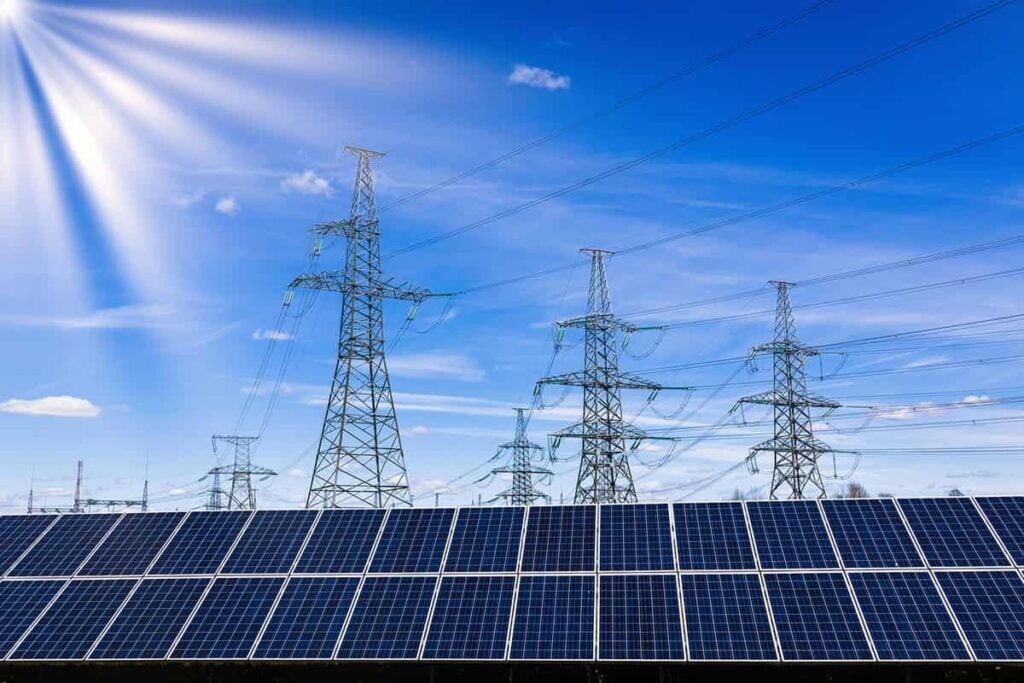Stem Inc. Stock and Investing in Solar Energy Storage
Table of contents

If Warren Buffett is the Oracle of Omaha, then Elon Musk is the Mystic of Moonshot Technologies. We’re no fanboys of the Tesla (TSLA) and SpaceX CEO, but we give the man his due in spite of his occasional impersonation of the Mayhem guy in the Allstate commercials. While most of the focus is on sexy stuff like electric vehicles (EVs) and rocketships, it’s easy to forget about Tesla’s energy generation and storage business. For the first nine months of this year, Tesla brought in $36.1 billion in revenues, only 6% of which came from their energy storage endeavors. However, that still represents $2.1 billion worth of revenues, up 69% based on the same time frame in the year prior. Much of the growth we’re told comes from energy storage solutions, not generation.
That tells us better than any dime-a-dozen market report that demand is strong for energy storage systems, particularly those connected to renewable energy like solar. It’s not just about decarbonization of energy, but also decentralization from the power grid. During last year’s record-setting race to the public markets, a number of energy storage companies suddenly became available to retail investors. In particular, we promised to revisit one headquartered near San Francisco called Stem Inc. (STEM) that claimed to use artificial intelligence to optimize primarily what is called a solar-plus-storage system, which is basically a battery system connected to a solar panel array. The deal was completed at the end of April 2021 and we now have some more solid data to review.
About Stem Inc. Stock
First, a quick recap: Founded in 2009, Stem Inc. had raised about $357 million as a startup from more than two dozen investors including GE before announcing in late 2020 it would merge with a special purpose acquisition company (SPAC). We first covered Stem in an article about the different ways AI could improve renewable energy applications. One of the most obvious is energy storage: The unpredictable nature of solar and wind means that you want to analyze and predict as many variables as possible. That enables you to manage and maximize the ebb and flow of Mother Nature through an energy storage system, which these days usually consists of lithium-ion batteries.
Stem developed a machine-learning platform called Athena to do just that by generating multiple forecasts about things like weather, current market prices, energy demand, and more. It then analyzes how to maximize value based on those predictions for a variety of solutions, such as bidding assets into wholesale energy markets, when to charge and discharge batteries, as well as the optimal time to charge an EV based on predicted conditions. The whole process is automated – even ensuring compliance with green energy tax credits – and Athena is continually learning to improve itself kilowatt-hour after kilowatt-hour.
You Know What They Say About Assumptions
You would assume that the core of the business is a software-as-a–service (SaaS) model with tidy, predictable recurring revenues. However, the company is largely reliant on hardware revenues, which involves selling solar-plus-storage systems, among other products, through various partnerships with battery manufacturers, engineering firms, and construction companies. However, the AI piece is finally starting to trickle in.

The company had a monster 3Q-2021 by its standards. Revenue came in at $39.8 million, which represents an increase of 334% from a year ago, primarily driven by $29.4 million more in hardware revenue. Meanwhile, services revenue (i.e., Athena and related software) brought in just under $5 million – about 12% of total revenue for the most recent quarter. For the first nine months of 2021, revenue hit $75 million compared to about $17.7 million in 2020. Service revenue was nearly $15 million, which means about 20% is software-related revenues.
You would also assume that the stock market might reward that kind of strong growth. Wrong again. The performance of Stem stock reflects the volatile year created by the SPAC boom and bust of 2021, with most stocks ending the year in the red based on the initial price available to retail investors. The share price for Stem actually peaked at nearly $50 in mid-February 2021 before the merger even completed. In fact, Stem stock took quite a beating for a couple of weeks immediately following its debut on the New York Stock Exchange. It bounced back strongly over the summer only to inexorably slide for the remainder of 2021 and into 2022. It is currently trading at its lowest price since the merger was completed, with a market cap of $2.15 billion.

Of course, that’s exactly when you want to buy a stock – when it’s beaten down. Based on the company’s current market cap, divided by annualized revenues based on its 3Q-2021 results ($159.2 million), we get a simple valuation ratio of 13.5. We’re willing to consider a stock with a ratio of 40 or less, so Stem stock doesn’t look overvalued at the current price. However, we are concerned that they promised $147 million in revenues for 2021 and have only delivered $74.6 million for the first three quarters of this year. Maybe Q4-2021 will be an absolute monster? In the meantime, let’s see whether it’s a business model that’s worth investing in.
Business Model and Case Studies
Stem offers a variety of solutions in energy storage, solar plus storage, wholesale energy markets, microgrids and backup power, utility bill optimization, demand response, commercial EV charging, and sustainability. Its customers operate both behind-the-meter (BTM) and front-of-the-meter (FTM) systems. The former provides power that can be used on site without passing through a meter, while the latter provides power to off-site locations.
Let’s take a look at a case study for a typical solar-plus-storage system at Santa Rosa Junior College, which is trying to be carbon neutral by 2030, as well as reduce its reliance on California’s shaky electric grid. The school installed a 2.6MW solar carport and 1.3MW energy storage system that used Athena to calculate rate structure, energy consumption, and other factors to optimize automatic deployment of stored energy, which reduced grid demand and costs. For a pilot project at a Penske EV truck charging depot, Athena modeled battery performance and charging behavior under a range of potential tariffs, while providing a real-time window into system operations. Since starting the pilot a year ago, the smart energy platform has reduced peak energy consumption by 40%.

More than half of the case studies on the company website are from California, which probably does more than any other U.S. state to subsidize green energy technologies. That means an unspecified chunk of revenue likely relies on government support, which can change at any time. It’s what we call regulatory risk, which is often why we avoid putting our money into equities like Stem stock.
AlsoEnergy Acquisition
Speaking of risks that make us nervous: In its Q3-2021 filing, Stem showed that only four customers accounted for nearly half of its revenue through the first nine months of the year.

That kind of customer concentration is unnerving, to say the least, especially if the majority of revenue relies on one-off hardware sales, which account for at least 80% of the company’s business in 2021 through the first three quarters, as we noted. Its business is also focused on North America, particularly the United States. Last month, the company did make a move to both expand its software services and diversify its customer portfolio with the $695 million acquisition of AlsoEnergy, a Colorado-based company that develops solar asset management software for performance, analytics, monitoring, and control solutions.

Founded in 2007, AlsoEnergy has 32.5 gigawatts of solar assets under management across more than 50 countries. In 2020, it reportedly generated $49 million in revenue with a meaty 60% gross margin across its software, grid-edge monitoring, controls, and services businesses. Stem emphasizes that most of the gigawatts under contract are not connected to an energy storage solution and the two companies only share about 30% of the same customers, so there’s obviously big plans to cross-sell solutions. It remains to be seen how well Stem can integrate its first major acquisition.
Voltus Stock: A Pure Play on Energy Trading
Stem isn’t necessarily competing against companies like Tesla or Fluence Energy (FLNC), an energy storage company that we came across last year, because they’re largely focused on utility-scale energy storage solutions. Meanwhile, companies like Stem mainly deploy what are sometimes referred to as distributed energy resources (DERs), which are small energy generation and storage technologies (i.e., solar-plus-storage systems) that typically produce less than 10 megawatts of power. (For comparison, a typical coal power plant produces 600 MW versus the 2.6MW solar carport at the junior college we described earlier.)

One thing that intrigued us about Fluence is that it acquired an AI-powered tool that uses machine-learning algorithms to forecast prices to compete on wholesale energy markets. It turns out that Tesla has its own machine-learning platform for automated energy trading called Autobidder. Likewise, Stem leverages Athena to help its customers with DERs compete in the wholesale energy markets in the United States and Canada. It’s unclear how much revenue the company makes from this application, but it’s going to be yet a smaller percentage of a still-modest revenue stream.
One pure-play software company focused on buying and selling energy is San Francisco-based Voltus, which has raised about $66 million since it was founded in 2016. Last month, the startup announced plans to merge with a SPAC called Broadscale Acquisition Corp. (SCLE) that would give it a market cap of about $1.3 billion if all goes as planned. Simply put, “Voltus connects buyers and sellers of distributed energy across fragmented electricity markets through a single platform, simplifying complex transactions with existing resources.” It’s a bit like Airbnb, to steal an analogy from the investor presentation: DERs are underutilized assets, like unused apartments. And just as Airbnb creates extra value for owners of those apartments, Voltus “creates extra value for DER owners by delivering their unused electricity to markets when needed.”

It’s a pretty interesting proposition – a SaaS model in a market being disrupted by alternative energy and storage solutions – but one of our 2022 resolutions is to spend less time churning through shiny investor decks and more time investigating SEC filings when the SPAC mergers have been finalized. Voltus claims estimated revenues of $42 million in 2021 and forecasts $73 million this year, with $65 million of that already contracted backlog. We’ll check back in with Voltus after the deal goes through, keeping a lookout for the ticker VLTS.
Conclusion
There’s not much about Stem to keep us on the hook for another review in the future since their future appears to be one of mainly selling hardware. Maybe the acquisition of AlsoEnergy will accelerate the company’s transition to a SaaS model that we could eventually get behind, with 10- to 20-year recurring revenue contracts that Stem claims are standard. But we have no interest in owning the current version of Stem stock, which presently is a company that manages and integrates small-scale solar storage projects.
Sign up to our newsletter to get more of our great research delivered straight to your inbox!
Nanalyze Weekly includes useful insights written by our team of underpaid MBAs, research on new disruptive technology stocks flying under the radar, and summaries of our recent research. Always 100% free.

















I found a very interesting Energy Storage stock: Zinc8 Energy Solutions (ZAIRF).
Zinc8 Energy Solutions is developing innovative battery technology that utilizes zinc and air as fuel for energy storage. The company says that its zinc-air regenerative fuel cell system resolves the intermittent and unpredictable nature of renewable energy sources such as wind and solar by providing longer durations of energy storage capabilities.
The Zinc8 energy storage system is based upon unique and patented zinc-air battery technology. Energy from the grid is stored in the form of zinc particles, similar in size to grains of sand. When the energy system is delivering power, the zinc particles are combined with oxygen drawn from the surrounding air. When the system is recharging, zinc particles are regenerated, and oxygen is returned to the surrounding air.
The company’s zinc-powered storage system offers numerous advantages over traditional lithium-ion based battery storage systems- not only is zinc a lower cost alternative to lithium, but the storage duration time offers the potential to be significantly longer. Lithium batteries are very expensive to make, and zinc is potentially a low cost alternative.
That is just way way too small to be on our radar. We’ve covered zinc-air flow batteries extensively in the past and haven’t seen that space achieve traction. They need to sell something to prove their solution has traction before we’d ever consider taking a closer look. Thank you for raising though!
This under-the-radar energy storage stock can get a 60% boost from Inflation Reduction Act, UBS says.
Analyst Jon Windham initiated coverage of Stem with a buy rating and $19 price target in a note to clients Tuesday, suggesting a 64% rally for the stock.
STEM’s high operating leverage business model is positioned to be a key beneficiary of the 30% stand-alone storage tax credit in the Inflation Reduction (IRA).
These analyst price targets are always to be taken with a grain of salt. Energy storage should get a boost, it’s just that we haven’t found much we like.